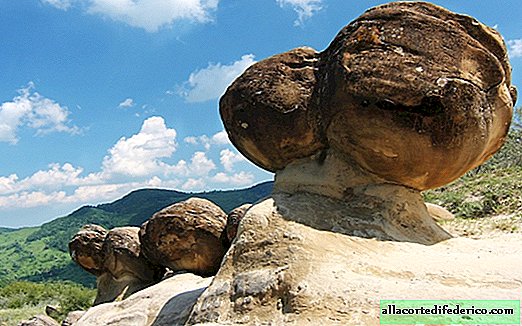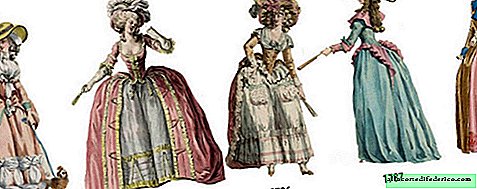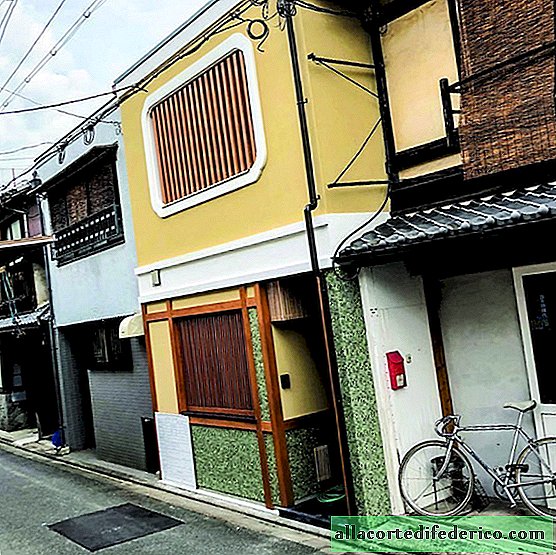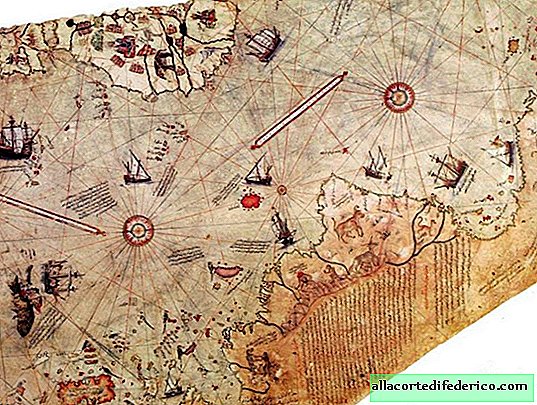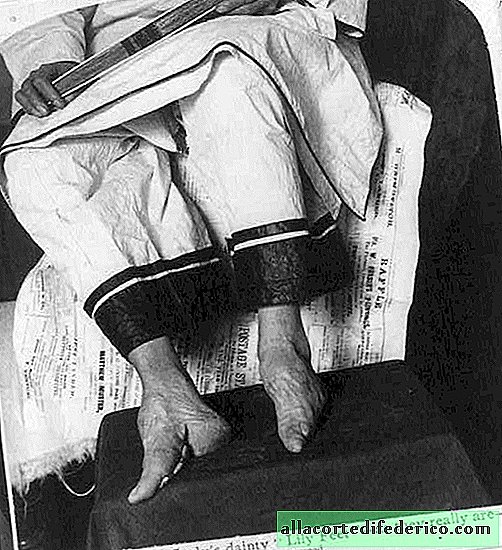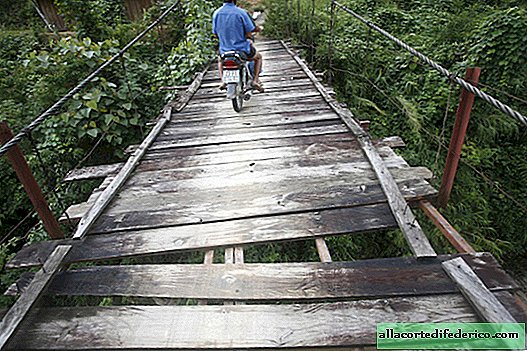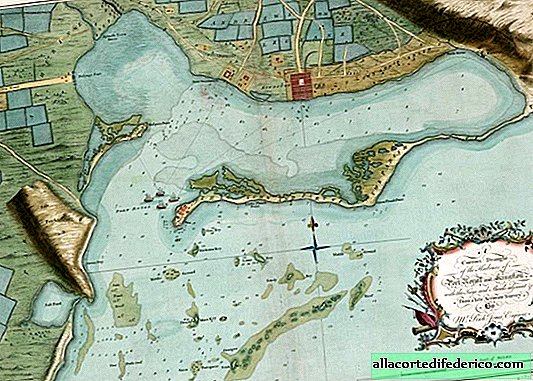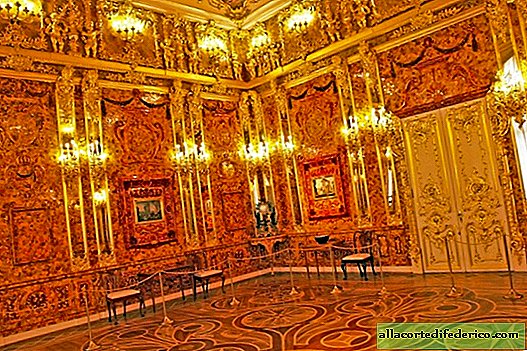History of the Old Bridge of Florence
The old bridge (Ponte Vecchio, Ponte Vecchio) was built in Florence over the Arno River in 1345 on the site of an ancient Roman bridge demolished by flooding. Initially, butcher shops were located here, carcasses of animals were carved on the spot, and waste was thrown into the river. In general, the smell around was very powerful, especially in the summer heat.
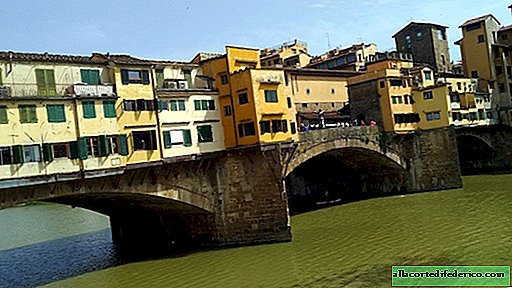
Soon, the Old Bridge became a place of lively city trade. Merchants' benches were located directly on the bridge. Presumably, the concept of "bankruptcy" appeared here. If the merchant could not pay the debts, then the city guards broke his shop. So from the two words "counter" (banco) and "broken" (rotto) the word "bankrupt" came.

According to legend, Mussolini made windows in the center of the bridge for Hitler so that the Fuhrer admired the view of Florence. According to one version, Hitler wanted to blow up the bridge during the retreat, but partisans prevented him.

This is the first bridge in history, during the construction of which similar arches were used. The bridge consists of three arches, the length of the central arch is 30 meters, the height is 4.4 meters, the side arches are smaller: length - 27 meters, height - 3.5 meters.
 This time the weather got lucky
This time the weather got lucky  Old bridge at the beginning of the 20th century
Old bridge at the beginning of the 20th century 
In the XVI century, the ruler of Florence, Duke Cosimo I of Medici drew attention to the area of the Old Bridge, by the will of the Duke, rich jewelry shops were located here. The Old Bridge received the second name "Golden Bridge", the status of which has changed dramatically.
"There is a bridge in Florence, called the Old Bridge. It is still built up with houses; in these houses were workshops of gold and silver jewelry.
True, these were not products in the modern sense: dressing of gold and silver things today is a craft; before it was art. That is why there was nothing more wonderful in the world than these workshops or, rather, the objects that decorated them; there were rounded onyx goblets, belted by wriggling dragons, - fabulous monsters lifted their heads, extended azure wings strewn with golden stars, and, with open fire-breathing jaws, looked menacingly at each other with their ruby eyes ...
And all this was not only skillfully executed, but conceived with poetic inspiration; not only charming, how charming trinkets to decorate a ladies' boudoir, but gorgeous, as the greatest works of art that can immortalize the king’s reign or the spirit of the nation ... ", - described Alexander Dumas Old Bridge in the novel" Ascanio ".
 Duke Cosimo I of Medici, who made the Old Bridge Golden
Duke Cosimo I of Medici, who made the Old Bridge Golden  Eleanor of Toledo, wife of Cosimo de Medici (grandmother of the French Queen Maria Medici)
Eleanor of Toledo, wife of Cosimo de Medici (grandmother of the French Queen Maria Medici) 
In honor of the marriage of his son Francesco and Princess Joan of Austria, the ruler ordered the construction of a corridor connecting the two city squares of the Palazzo Vecchio and the Palazzo Pitti, which passed over the buildings of the bridge.
The Medici clan was not noble, descended from a family of bankers, and Cosimo wanted to impress his new royal relatives.
 Heir - Francesco Medici
Heir - Francesco Medici  His fiancee is Princess Joan of Austria, for whom a secret corridor was built. Judging by the portrait, the princess was moody
His fiancee is Princess Joan of Austria, for whom a secret corridor was built. Judging by the portrait, the princess was moodyCosimo de Medici ordered dormers to be made in the gallery above the bridge in order to eavesdrop on what common people say about him.
The secret passage was called the Vasari Corridor in honor of the architect who embodied the idea of the Medici.
 Medieval street art
Medieval street artNow in the Vasari Corridor there is an art gallery where the works of Russian artists Kustodiev and Kiprensky are also collected.
 The road from the bridge to the central square
The road from the bridge to the central square  Mannelli Tower
Mannelli TowerThe Vasari corridor passed through city buildings. The noble Mannelli family was the only one who resisted the passage of the Corridor through their property, as happened for other buildings. Mannelli insisted that the Corridor be built around the tower.

Legend has it that the Mannelli family paid the Medici tax for several years for their intervention in the project.

On the bridge in 1901, a monument was erected to Benvenuto Cellini, the famous sculptor and jeweler of the 16th century. Those who are familiar with the work of A. Dumas must have read the Ascanio novel about the adventures of this talented person.
 Monument to the jeweler Benvenuto Cellini on the Old Bridge. Near the building, on the roof of which (top right) you can see the medieval sundials installed in the XIV century
Monument to the jeweler Benvenuto Cellini on the Old Bridge. Near the building, on the roof of which (top right) you can see the medieval sundials installed in the XIV century  View from the Old Bridge to the Arno River
View from the Old Bridge to the Arno River



